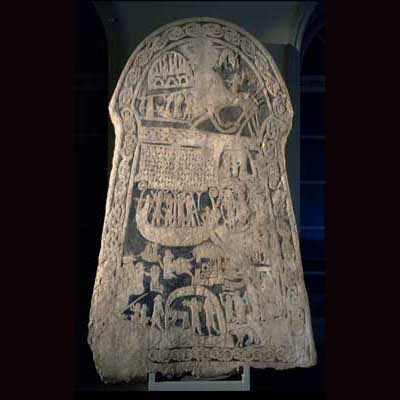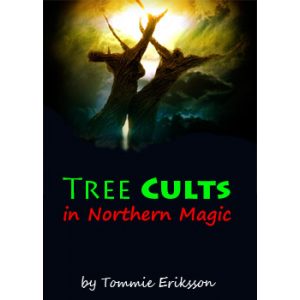
Beginner Level:
Stephen Pollington. Rudiments of Runelore. Anglo-Saxon Books, 3rd edition, 2008.Single best book to start with if you're not familiar with the Runes and an excellent reference overall. Pollington provides a summary of all the evidence about the runes and allows the reader to draw their own conclusions. The book contains all of the rune poems, plus other rune-related verse. The book is particularly noteworthy for the attention Pollington gives to the phonology of the runes.
Leon D. Wild. The Runes Workbook: A Step-by-Step Guide to Learning the Wisdom of the Staves. Thunder Bay Press, San Diego. 2004.
The other 'single' best book to start with if you're not familiar with the Runes and still a good resource if you're already studying the Runes. Covers the history and meanings of the Runes succinctly yet thoroughly and offers a clear method for studying the Runes on your own.
Nigel Pennick. The Complete Illustrated Guide to Runes. Barnes & Noble Books, New York. 1999.
Although I refer to this as my "Runic coffee table book", it is an excellent overview of all espects of the Runes over time. Pennick covers the entire breadth of topics relevant to the Runes, from ancient history to the different kinds of Runes to contemporary magical and divinatory practice.
Sweyn Plowright. The Rune Primer: A Down-to-Earth Guilde to the Runes. 2nd Edition. Rune-Net 2006. [Available online for as little as $4: http://www.mackaos.com.au/Rune-Net/Primer/]
The other single best book to start with once you're somewhat familiar with the Runes (eg. have read Wild's book, or one or more of the others on this list). Written for the novice and readily accessible, The Rune Primer takes a middle-of-the-road revisionist approach to both esoteric authors (like Wild, Thorsson, etc.) and academic authors (like Elliot, Page, etc.). Sweyn says it best early in the Primer: "Somewhere between the extremes is a position where we can find reasonably solid ground on which to build. This position can be found by looking at the sources, and casting a critical eye over the way these have been interpreted by the more relevant writers. In this way we can see what remains of the ancient tradition, and help to build upon modern convention in order to harmonise our use of the Runes with both the old Germanic culture and modern Asatru."
Intermediate:
Diana L. Paxson. Taking Up the Runes: A Complete Guide to Using the Runes in Spells, Rituals, Divination, and Magic. Weiser Books, Boston. 2005.
My other favorite book on the Runes alongside Wild's. Paxson thoroughly covers the original cultural context as contemporary understandings of the Runes, summarizing prior authors' writings (including Thorsson, Gundarsson, and Aswynn) about the Runes in the process. For each Rune she suggests ways of working with it magically, in addition to its interpretation in divination. The second half of the book is devoted to an in-depth series of rituals working with the Runes a pair at a time.
Edred Thorsson. Runelore. Weiser Books, Boston. 1987.
One of the classic works on Runes for use in divination and magic. Thorsson can be regarded as the originator of the contemporary revival of interest in the Runes as understood in their original Germanic cultural context and adapted for contemporary magico-religious use. Thorsson's perspective on the Runes comes from: earning a doctoral in Germanic Languages and Medieval Studies; studying extensively the Icelandic, German, and Swedish works on the Runes from the Medieval Period up to the present day; and being a practioner of occult arts in the Western magical tradition.
Kveldulf Gundarsson. Teutonic Magic. Llewellyn Publications, Inc., St. Paul, 1994. [Note: This edition is out of print. An eBook version can purchased for $12 at Freya Aswynn's website]
Another classic work on the Runes. Gundarsson, drawing on Thorsson's work, provides an understanding of the Runes rooted in Germanic folklore and describes Runic magic in terms of original Germanic and Nordic folk practice.
Freya Aswynn. Northern Mysteries and Magick: Runes, Gods, and Feminine Powers. Revised Edition of the Classic Leaves of Yggdrasil. Llewellyn Publications, Inc., St. Paul, 1998.
The other primary classic on Runes, in addition to Gundarsson's and Thorsson's works. Aswynn's perspective is feminist, shamanic, and derived from intense personal experience. While some of Aswynn's ideas may have no clear precedent in Runic lore, many of them have rung true for modern readers and become accepted into contemporary Runic tradition.
Swain Wodening. Hammer of the Gods: Anglo-Saxon Paganism in Modern Times. Angleseaxisce Ealdriht, Little Elm, 2003.
Although devoted to the more general topic of Anglo-Saxon Heathenry (or Paganism), Swain Wodening's book contains a worthwhile section (Chapter XVII) on the Anglo-Saxon Runes, understood specifically within the context of Anglo-Saxon culture. For those interested in the Anglo-Saxon Runes but less interested in Anglo-Saxon Heathenry, Swain Wodening's ideas are also presented online, via the Miercinga ?eod's web page on Anglo-Saxon Galdors, Runes, Sei?r, Sp?: http://www.ealdriht.org/runes.html. A related online source for information about the Anglo-Saxon Runes is Eric Wodening's Rune Pages.
Advanced Topics:
Stephen E. Flowers. The Rune-Poems, Volume I: Introduction, Texts, Translations and Glossary. Runa-Raven Press, Smithville, 2002.
Best book in print on the three Rune Poems (Old English, Norwegian, and Icelandic) plus a few related topics. Includes an (almost) complete glossary of all the words in each poem, to enable to reader to understand the poems more fully in the context of alternate meanings and interpretations. (Note: 'Edred Thorsson' is Stephen Flowers' nom-de-plume when writing less academic works.)
Stephen E. Flowers. The Galdrabok: An Icelandic Book of Magic. 2nd, Revised Edition. Runa-Raven Press, Smithville. 2005.
A translation of the 16th/17th century Icelandic grimoire, The Galdrabok, a tome of magic blending native Runic traditions with Western/Mediterranean magical practices. Includes a presentation of the history and background of the text.
R.W.V. Elliot. Runes: An Introduction. 2nd edition. St. Martins Press. 1989.
Scholarly text on the Runes, introductory level.
R.I. Page. An Introduction to English Runes. Boydell Press, Woodbridge. 2nd edition, 1999.
Scholarly text on the Runes, introductory level; specific to Anglo-Saxon Runes.
Jantina Helena Looijenga. Runes around the North Sea and on the Continent AD 150-700. PhD. dissertation. Groningen. 1997. http://irs.ub.rug.nl/ppn/163895791
Scholarly text on Elder Futhark inscriptions on the Continent (i.e., not including Sweden and Norway); includes an extensive catalogue of Runic inscriptions.
Elmer H. Antonsen. Runes and Germanic Linguistics. (Trends in linguistics studies and monographs 140.) Mouton de Gruyter, Berlin. 2002.
Scholarly text on the Runes, focusing on the Elder period and addressing inscriptions and topics in runology from a linguistic perspective.
Richard L. Morris. Runic and Mediterranean Epigraphy. (Nowele ; Suppl. Vol 4.) Coronet Books, Inc., 1988.
Scholarly text studying the origin of the Runes and seeking the Mediterranean source alphabet for the Runes. Morris proposes a pre-500 BC date for the origin of the Runes based on his investigations comparing Elder Runic inscriptions with both pre-Classical and Classical Mediterranean alphabets.
Labels: all ancient greek gods and goddesses list of gods and goddesses pictures of gods and goddesses viking gods loki god and goddess of rome the greek gods and goddesses names true love spells free information on greek gods and goddesses love witchcraft spells


